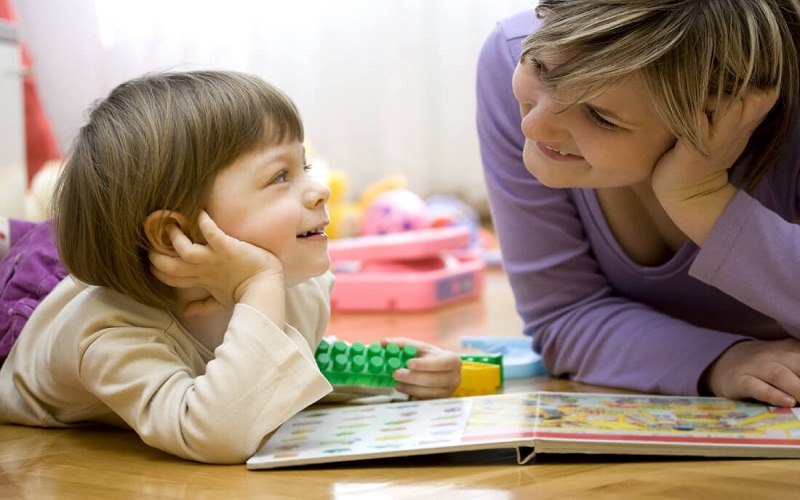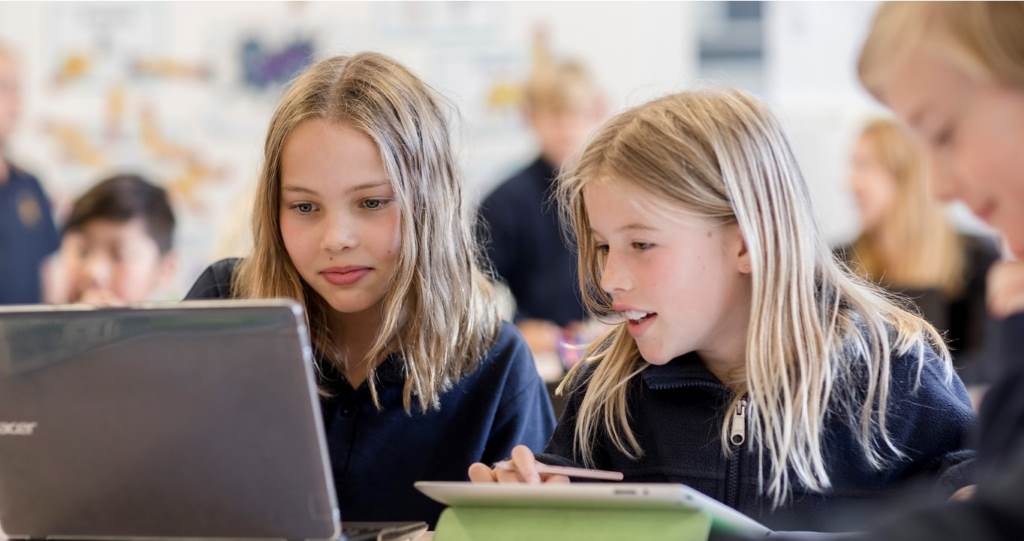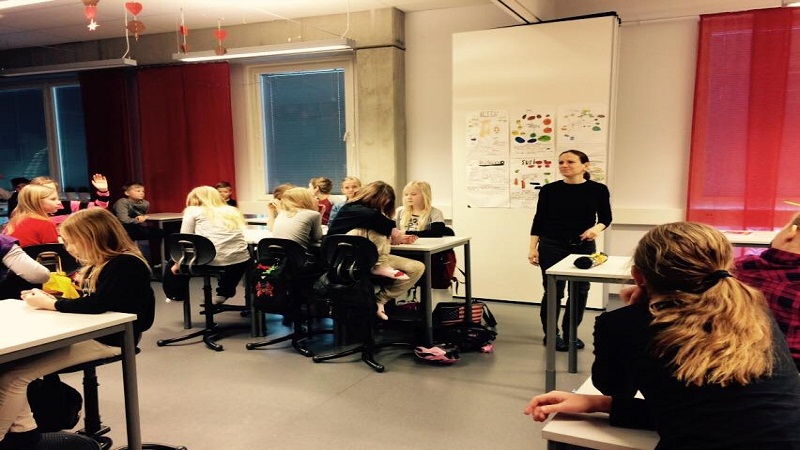Good manners at the table-We parents want family meals to be quiet and relaxed and it puts us in a bad mood that the child shows bad manners, that bothers the brother or that he plays with the food.
Is it possible to teach children to eat from the first stages? we give you some advice about what parents can do so that children learn good manners at the table and behave correctly.
Good manners in children

Children’s education is more than taking them to school to learn history, mathematics or literature. There are social norms of coexistence that we have to inculcate from small, from giving thanks to say hello or know how to manners at the table.
The importance of teaching education standards to your children
Everything your children learn as children will help them grow as a sociable and self-confident adult. When he grows up, he will know how to relate to others and will not be afraid to show himself as he is. If you want your child to be a happy adult, you will have to impose some rules from a young age . If you let him do what he wants, when he grows up he will not know how to face real life. Greet and thank, are basic rules of behavior and relationship between people.
Teach your child to say hello

Saying ‘hello’ and ‘goodbye’ is a gesture of courtesy that children should learn from a young age. Think of it as a basic norm of education. It is part of the most basic communication between people. If you want your child to be a sociable person , you must understand that greeting is a basic principle. Express respect and cordiality.
How to teach him to say hello? When someone passes by and you say hello, remind your child that he should do it. What he should also say ‘hello’ and ‘goodbye’ to his friends. But beware, there are children who do not want to greet because of shyness , who hide behind their parents because it gives them ‘shame’. In those cases, do not force him, let alone humiliate him with phrases like ‘this child has come out very weird’. Explain later the importance of greeting others and being kind. Little by little he will assimilate it. Give it time.
Teach the child to say thank you
The gratitude is one of the main values that our children should learn . Children, as a rule, are selfish . That is why it will be difficult for them to understand that when they receive something, they should give thanks. Especially if they are small. Before two years, they will repeat the word but will not understand what it means. As they grow, they will begin to value the word ‘thank you’.
- Explain that if someone does something for us, we should reward them with a ‘thank you’. Be a physical gift or something immaterial. Over time they should realize that receiving a kiss from their grandmother is as or more rewarding than receiving a gift .
- Thanking you for something is a positive reinforcement. Also a tool to increase the self – esteem of your children. Be thankful for the little things you do: collect your toys, help set the table … In this way you will understand the meaning of the word, while feeling useful and autonomous.
How to teach standards of behavior at the table to children

How can children learn rules of behavior at the table ? It is easier than it seems, especially, if we do it from the early stages of childhood, even since they are babies, here are some tips to achieve it:
- Start from when they are babies: they have to learn to differentiate the moment of playing or walking, of the food. In this way, it is easier and they assume the rules as something normal.
- For older children: if it has not been started before and the children show bad manners, we should talk to them before the meal and explain what we expect from them. We have to give them a series of easy and simple rules, not too many, so they know what it means to be good at the table: do not disturb the brother, do not talk with your mouth full, do not play with the food and get the silverware .
- The television must be turned off : we should not eat with our mobile phone, nor bring toys on the table, nor read at lunchtime. There should be no distractions, nor should there be any other activity than eating.
- Set a time to eat: for the whole family, even for those who eat slower, we stipulate a time that we consider normal, for example, 30 or 40 minutes, beyond that time, the mealtime has ended and We have to pick up the food.
- If the child misbehaves: when a child is not doing well , receives all the attention, either because it is bothering the brother or because he eats badly, while the other, who may be doing well, has no attention any. We must make it clear that we will only pay attention to the one who behaves well and is complying with the rules at the table.
- We must reinforce the good behavior: if it takes the cutlery well, if it has finished eating or if it did not do nonsense in the food, we have to tell them how well it is doing. You do not have to buy them gifts because they eat well, it’s part of their obligations, but we should praise them when they get it. We can tell you that if they do it well after a week or 15 days, we can go out to eat somewhere you like because it is ready.
Educate the behavior of young children at mealtime
Making children maintain good manners at the table is easier than it seems, especially if parents educate them since they are very small. You can start from when they are babies. Silvia Lava gives us ideas of how to do it:
- Children should know that when we are eating, even if it is a bottle , we are eating and we are not going to something else.
- We must avoid distractions. The TV must be turned off and adults must set an example by not answering the phone or doing multiple activities at once. We are just eating and giving importance to the food that really has.
- An error that we usually make is to tell the child: ” behave yourself at the table”. But what is that? The child does not know. We have to define it and follow some rules that are going to be very clear: we eat everything that is served; No nonsense, it is an order that children understand perfectly, no need to define and eat within the time we have established.
- The habit of eating well is equal to the habit of studying, maintaining hygiene, sleeping, etc. If we teach children what is good and we leave it very clear, but with few basic orders that allow us to encompass the set of all the habits of the food, we will be able to regulate the habit of the meals.
- It is essential to educate the behavior of children at the table since they are small, so then with 7 or 8 years eat great without having made much effort and without having developed any problems.
When children are older and do not manners at the table

- We must sit down with them and explain what they have to do in a meal. In this way, they will know what they have to do to eat well: we are going to obey , we are going to take the cutlery and not eat with your hands, you are not going to chew on your brother, you are not going to talk with your mouth full .. .
- Once the explanation of what they have to do in that meal, we can give a small prize at the end. When they have a week or 15 days doing it well, we will go out to eat at a place that you like. Meanwhile, we will not go out. The prize they have to earn and conquer with their good behavior.
Finally, the place where the good or bad education of a person, not only of children, is most noticeable, is undoubtedly in their way of behaving at the table. Around a table, we reflect our sense of good taste and our courtesy. Teaching children to behave at the table in style, respecting the value of food, ensures a pleasant meal for those around us. Good manners at the table for children are a guide of good taste and knowing how to be. Our goal as parents is to educate our children so that they acquire good habits during meals . At the table, it is one of the places where you can clearly see who the spoiled child is , which usually coincides with the rude child.







